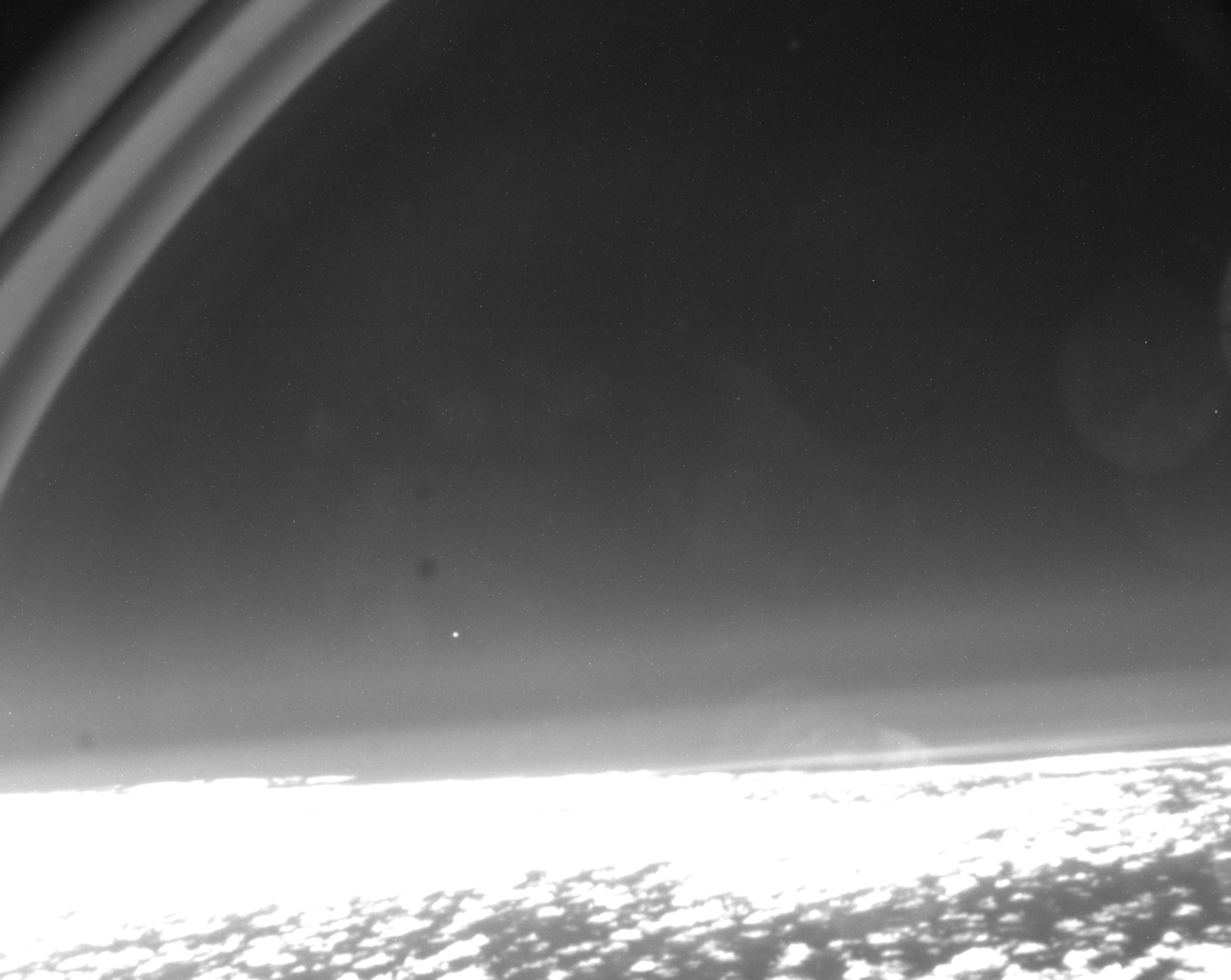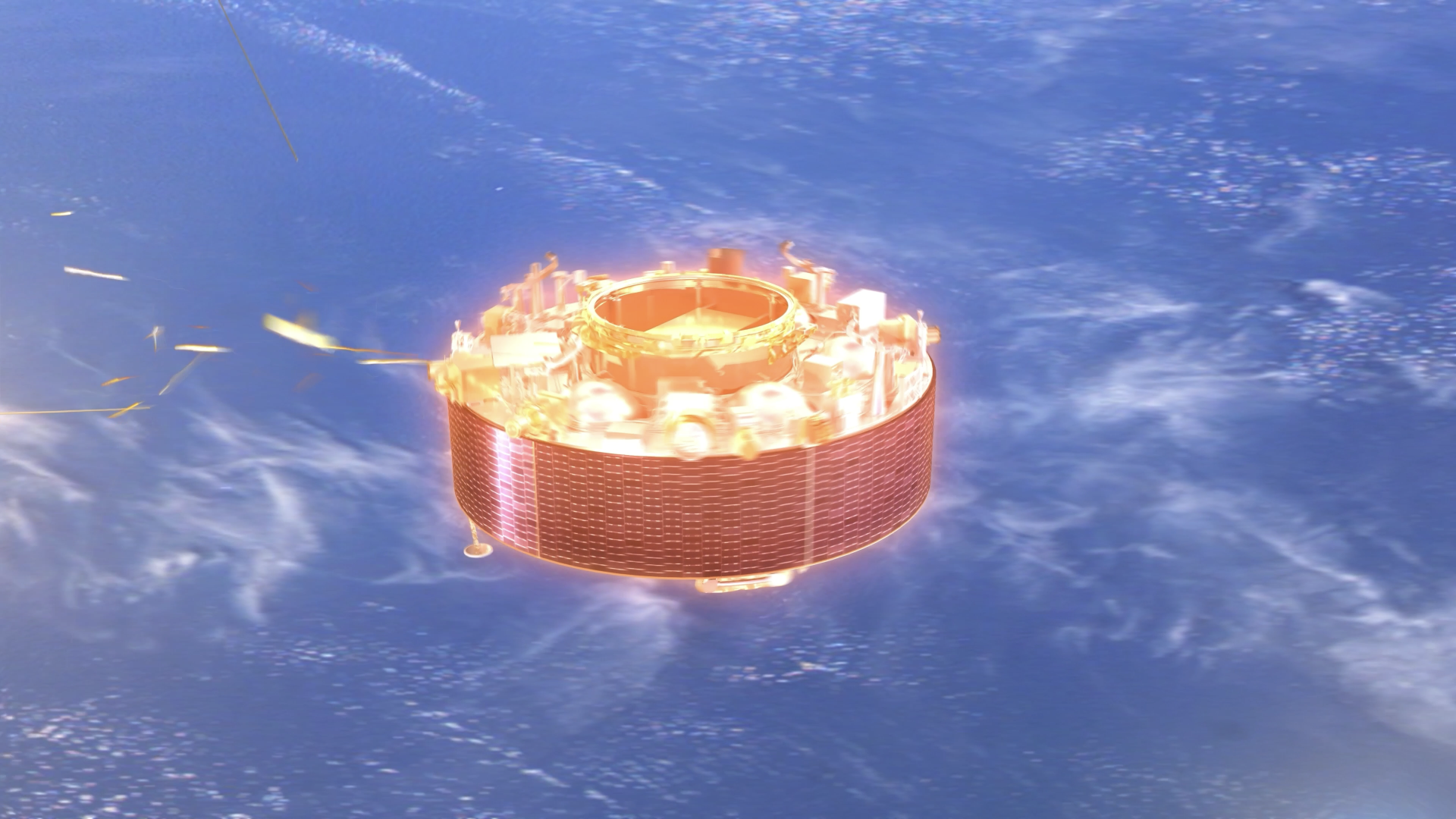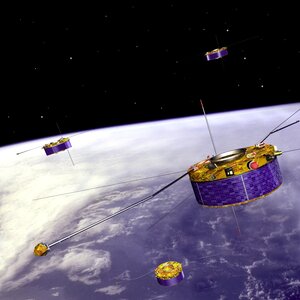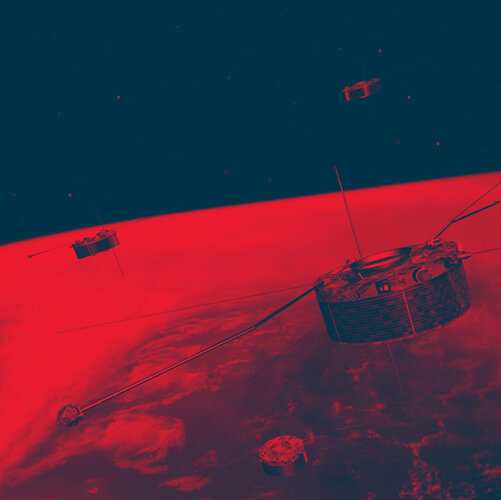Goodnight, Cluster: brilliant end to trailblazing mission
The first satellite in ESA’s Cluster quartet safely came back down to Earth last night in a world-first ‘targeted reentry’, marking a brilliant end to this remarkable mission.
The spacecraft, dubbed ‘Salsa’ (Cluster 2), reentered Earth’s atmosphere at 20:47 CEST on 8 September 2024 over the South Pacific Ocean. In this region, any risk of fragments reaching land are absolutely minimised.
During the last two decades Cluster has spent in space, it has provided invaluable data on how the Sun interacts with Earth’s magnetic field, helping us better understand and forecast space weather. With this first-ever targeted reentry, Cluster will go down in history for a second reason – helping ESA become a world-leader in sustainable space exploration.
The reentry follows a tweaking of Salsa’s orbit back in January 2024 to target a region as far as possible from populated regions. This ensured that any spacecraft parts that survive the reentry would fall over the open ocean.
Over the past days, weeks and months, ESA’s spacecraft operators kept a close eye on Salsa as it came closer to Earth, slightly adjusting the spacecraft’s trajectory just once to keep it on track.

Nowadays, satellite missions are designed according to regulations that require them to minimise the risk of causing damage on their return to Earth. However, when Cluster was built back in the 1990s no such regulations were in place. Without intervention, the four Cluster satellites would have reentered Earth’s atmosphere naturally – but with less control over when or where this would happen.
ESA Director of Operations, Rolf Densing explains why ESA decided to end the mission in this way: “Salsa’s reentry was always going to be very low risk, but we wanted to push the boundaries and reduce the threat even further, demonstrating our commitment to ESA’s Zero Debris approach.”
“By studying how and when Salsa and the other three Cluster satellites burn up in the atmosphere, we are learning a great deal about reentry science, hopefully allowing us to apply the same approach to other satellites when they come to the end of their lives.”
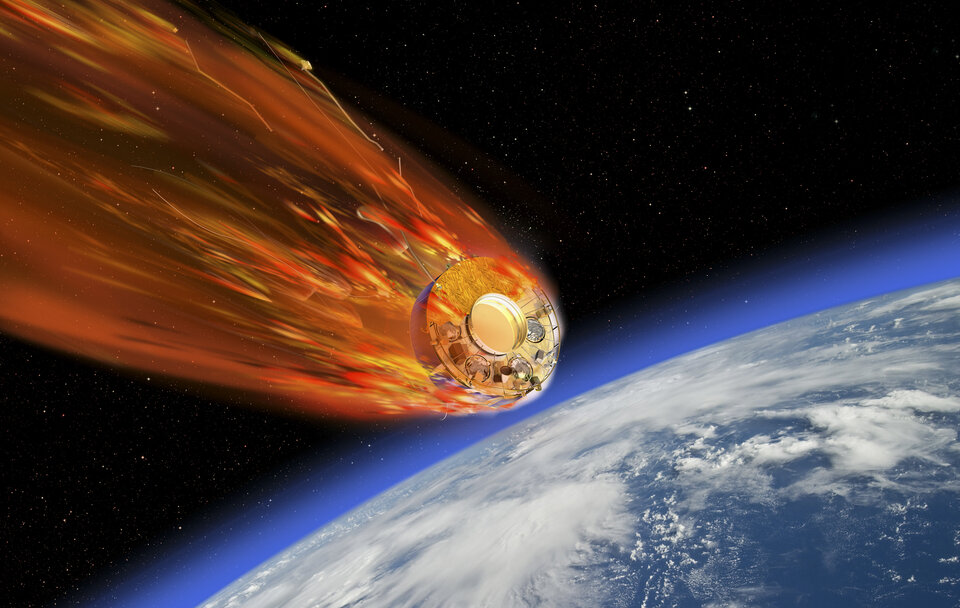
Cluster unveiled Earth’s invisible shield
Salsa’s reentry marks the end of a unique mission that will ultimately help protect humanity from our tempestuous Sun.
Water? Warmth? Minerals? All vital for life, but not unique to planet Earth. Perhaps the one key thing that makes Earth a remarkable habitable world where life can thrive is its powerful magnetosphere.
Just a few hundred kilometres above our heads, a continuous battle is being fought between the forces of nature. Like a ship in a never-ending storm, Earth is bombarded by swarms of particles ejected from the Sun at supersonic speeds.

Most of these solar wind particles are deflected by the magnetosphere, and sail harmlessly by. But Earth’s shield is not bulletproof. Gusts of solar wind can squeeze it mercilessly, pushing energetic particles through weak spots, and potentially damaging electronic equipment including vital satellites orbiting in space.
It might sound like science fiction, but scientists have been studying this continuous feud between the Sun and Earth for many years, first from the ground and then with the aid of single satellites. But the complexities of the Sun-Earth connection have always eluded them. Until Cluster came along.
Director of Science Prof. Carole Mundell says: “Cluster is the first mission to make detailed studies, models and 3D maps of Earth’s magnetic field, as well as related processes within and around it. We’re proud to say that through Cluster and other missions, ESA has advanced humankind’s understanding of how the solar wind interacts with the magnetosphere, helping us prepare for the dangers it can bring.”
Magnetosphere monitoring: a corner piece in the space weather puzzle

Our understanding of space weather – the environmental conditions in space caused by the Sun’s activity – depends on understanding many different factors: the behaviour of the Sun, how the solar wind travels through space, and how Earth’s magnetosphere responds.
With Cluster, ESA took on the challenge of uncovering how Earth’s magnetosphere responds to the solar wind. Other ESA missions have studied different parts of the process, with Solar Orbiter, SOHO, Proba-2 and Ulysses keeping watching on the Sun itself, and Swarm and Double Star also studying Earth’s magnetic environment. Double Star focused on the ‘magnetotail’ that stretches away from planet Earth, and Swarm continues to analyse Earth’s magnetic field itself.
Cluster’s scientific torch will be passed on to the ESA/Chinese Academy of Sciences Solar wind Magnetosphere Ionosphere Link Explorer (Smile) mission, set to launch in late 2025.
A few years later, ESA’s Vigil mission will head into space to put the different puzzle pieces together, aiming to provide continuous, near real-time data on potentially hazardous solar activity. Ultimately this will help us ensure safe satellite communications and space and air travel.
What made Cluster so special?
While most missions exploring Earth’s magnetic phenomena focus on the equator, the Cluster quartet circled over the poles, where there is a lot of magnetic activity. Solar wind in this area can dive deeper into Earth’s upper atmosphere, giving rise to the spectacular auroras.
Cluster’s ability to observe higher latitudes than other missions meant that it revealed parts of the magnetosphere that we’ve never been able to ‘see’ before with multiple spacecraft at the same time.
Through its mapping of Earth’s magnetic field, and comparison of this to Mars’s lacklustre present-day magnetism, Cluster has reaffirmed the importance of our magnetosphere in shielding us from the solar wind.
The mission also helped us understand weaknesses in the magnetosphere, including how solar wind particles can break through the shield. It even discovered the origin of ‘killer electrons’, energetic particles in the outer belt of radiation surrounding Earth, that can cause havoc for satellites.
By continually monitoring and recording the dynamics and properties of Earth’s magnetosphere over two decades, Cluster has amassed an unprecedented wealth of data, allowing scientists to make truly ground-breaking findings, including on longer-term trends.
After an incredibly successful 24 years in space, ESA took the decision to deorbit the four Cluster satellites throughout 2024–2026. Planning the reentries at this time made it possible for the Cluster spacecraft to contribute to reentry science as a final farewell.
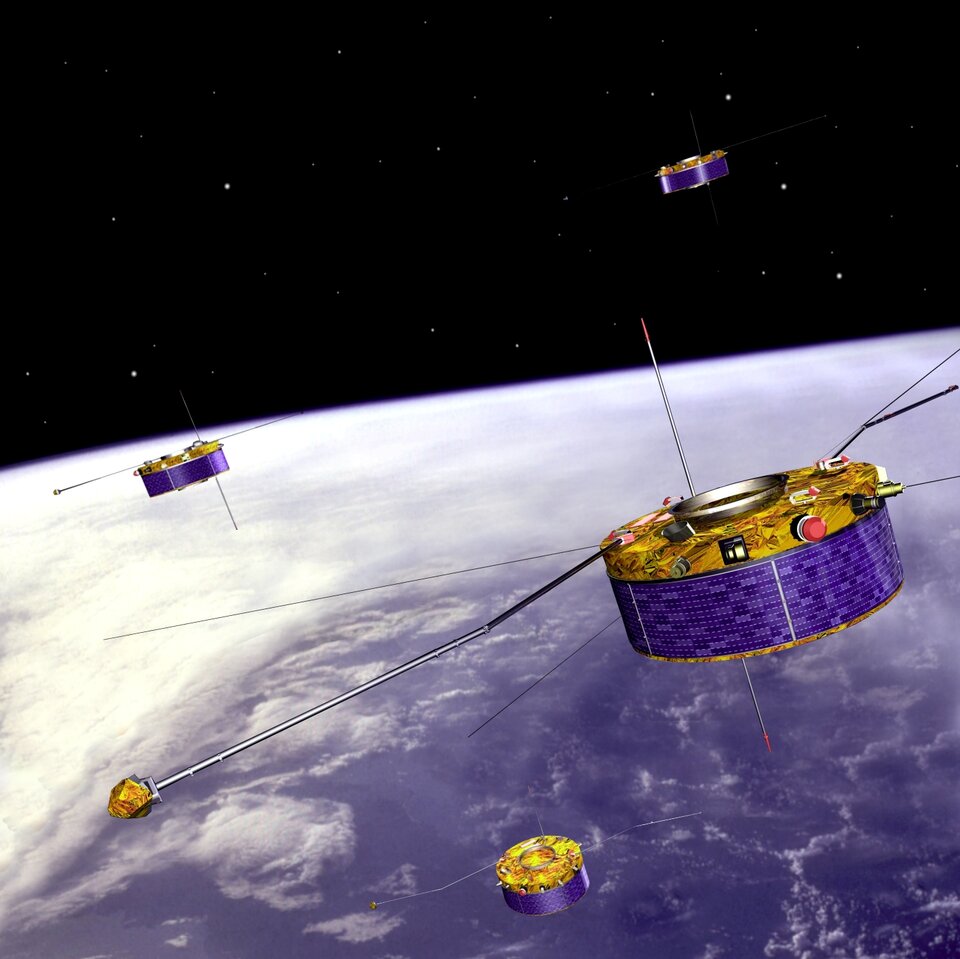
“Cluster’s multi-spacecraft design has always been key to its success,” explains Philippe Escoubet, Cluster Mission Manager.
“By using four spacecraft instead of one, Cluster was able to uniquely measure multiple areas of space simultaneously. When closer together, the Cluster spacecraft could dig into the finer magnetic structures in near-Earth space. When further apart, they could obtain a broader view of wider-scale activity.”
And now ESA is using the fact that there are four Cluster satellites to better understand how reentries work. By comparing the reentries of four identical satellites under different space weather conditions and with slightly different trajectories, ESA’s space debris team is conducting a valuable experiment on the break-up of satellites in the atmosphere. Ultimately, this will make satellite reentries even safer.

From zero to hero
Although Cluster has become an enormous scientific success, its early days didn’t go off without a hitch.
The rocket used to launch the Rumba (Cluster 1) and Tango (Cluster 4) satellites in 2000 left them in an incorrect orbit, forcing them to rely on their own propulsion, as well as the upper stage of the rocket, to get to the right position to join Salsa (Cluster 2) and Samba (Cluster 3).
The mishap followed the failed launch of the original Cluster quartet in 1996.
Since then, the mission has made tremendous progress, far outlasting its original planned lifetime and contributing enormously to our understanding of the interaction between the Sun and Earth. And yesterday, Cluster became a key piece in ESA’s efforts towards more sustainable space exploration.
For more on Cluster’s scientific achievements, see our dedicated article on how the mission spent two decades studying Earth’s magnetosphere.
For more information, please contact ESA Media Relations:















 Germany
Germany
 Austria
Austria
 Belgium
Belgium
 Denmark
Denmark
 Spain
Spain
 Estonia
Estonia
 Finland
Finland
 France
France
 Greece
Greece
 Hungary
Hungary
 Ireland
Ireland
 Italy
Italy
 Luxembourg
Luxembourg
 Norway
Norway
 The Netherlands
The Netherlands
 Poland
Poland
 Portugal
Portugal
 Czechia
Czechia
 Romania
Romania
 United Kingdom
United Kingdom
 Slovenia
Slovenia
 Sweden
Sweden
 Switzerland
Switzerland


























